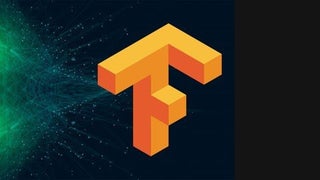Fujitsu, Google Cloud, Mavenir, Radisys and Wind River to Deliver Solutions for Smart Hospitals, Factories, Warehouses and StoresSANTA CLARA, Calif., April 12, 2021 (GLOBE NEWSWIRE) — GTC — …
In the geography of data center security, efforts have long focused on protecting north-south traffic — the data that passes between the data center and the rest of the network. But one of the greatest risks has become east-west traffic — network packets passing between servers within a data center. That’s due to the growth Read article >
The post Dream State: Cybersecurity Vendors Detect Breaches in an Instant with NVIDIA Morpheus appeared first on The Official NVIDIA Blog.
New Framework Powered by NVIDIA GPUs, BlueField DPUs Enables Cybersecurity Providers to Develop AI Solutions That Can Instantly Detect Cyber BreachesSANTA CLARA, Calif., April 12, 2021 (GLOBE …
AI is the most powerful new technology of our time, but it’s been a force that’s hard to harness for many enterprises — until now. Many companies lack the specialized skills, access to large datasets or accelerated computing that deep learning requires. Others are realizing the benefits of AI and want to spread them quickly Read article >
The post Fast Track to Enterprise AI: New NVIDIA Workflow Lets Any User Choose, Adapt, Deploy Models Easily appeared first on The Official NVIDIA Blog.
Pre-Trained Deep Learning Models and Software Tools Enable Developers to Adapt Jarvis for All Industries; Easily Deployed from Any Cloud to EdgeSANTA CLARA, Calif., April 12, 2021 (GLOBE …
Leading Computer Makers Launch Workstations and NVIDIA-Certified Systems for Omniverse; BMW Group, Ericsson, Foster + Partners, WPP Among Early AdoptersSANTA CLARA, Calif., April 12, 2021 …
I’m new to deep learning and I trying to model a univariate time series using the sliding window approach with a LSTM model. My training dataset takes 16 values to predict the next 16. My code is writing in R.
I am getting a warning and I cannot understand what I am doing wrong. I think that the problem is when specifying the model.
I am totally new to this. So if you could help me would be great.
Bellow is the whole code. I got the warning at the very end, after predicting
train_sliding = create_dataset(data = kt_train_male_scaled, n_input = 16, n_out = 16)
X_train = train_sliding[[1]] #97, 16
y_train = train_sliding[[2]] #97, 16
#Array transformation to Keras LSTM
dim(X_train) = c(dim(X_train), 1)
dim(X_train) # 97, 16, 1
I think the problem should be in this chunk of code. I think I am building the model wrong
#Model in Keras
X_shape2 = dim(X_train)[2] #16
X_shape3 = dim(X_train)[3] #1
batch_size = 1
model <- keras_model_sequential()
model%>%
layer_lstm(units = 64, activation = “relu”, batch_size = batch_size, input_shape = c(dim(X_train)[2], dim(X_train)[3]),stateful= TRUE)%>%
#layer_lstm(units = 5, activation = “relu”, stateful= TRUE) %>%
layer_dense(units = 1)
summary(model)
model %>% compile(
loss = ‘mse’,
optimizer = optimizer_adam(lr= 0.01, decay = 1e-6 ),
metrics = c(‘mae’)
)
Epochs = 100
for(i in 1:Epochs ){
model %>% fit(X_train, y_train, epochs=1, batch_size=batch_size, verbose=1, shuffle=FALSE)
model %>% reset_states()
}
L = length(kt_test_male_scaled)
scaler = Scaled$scaler
predictions = numeric(L)
I get the warning after running this part. Also, all my 16 predictions have the same value. I also tried to use dim(X) = c(1,16,1) but it did not work
for(i in 1:L){
X = kt_test_male_scaled[i]
dim(X) = c(1,1,1)
yhat = model %>% predict(X, batch_size=batch_size)
# invert scaling
yhat = invert_scaling(yhat, scaler, c(-1, 1))
# invert differencing
#yhat = yhat + kt_male[(n+i)]
# store
predictions[i] <- yhat
}
Model was constructed with shape (1, 16, 1) for input KerasTensor(type_spec=TensorSpec(shape=(1, 16, 1), dtype=tf.float32, name=’lstm_107_input’), name=’lstm_107_input’, description=”created by layer ‘lstm_107_input'”), but it was called on an input with incompatible shape (1, 1, 1)
submitted by /u/rods2292
[visit reddit] [comments]


|
submitted by /u/Ordinary_Craft [visit reddit] [comments] |
It doesn’t make sense. the shadow of the corner T looks like it has 5 cubic lengths when the physical figure’s T has 1 cubic length on the top right.
submitted by /u/Silver4R4449
[visit reddit] [comments]
submitted by /u/NickLRealtor
[visit reddit] [comments]
